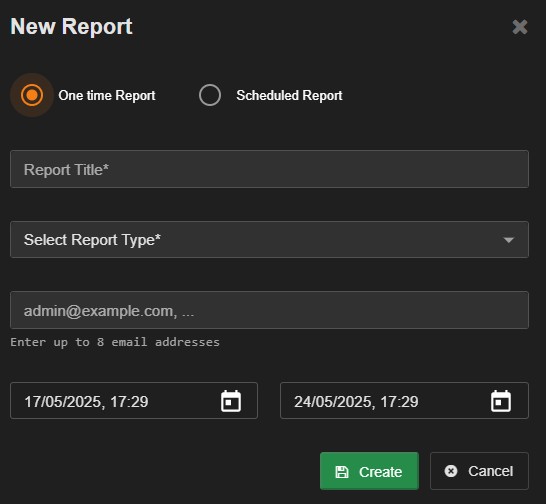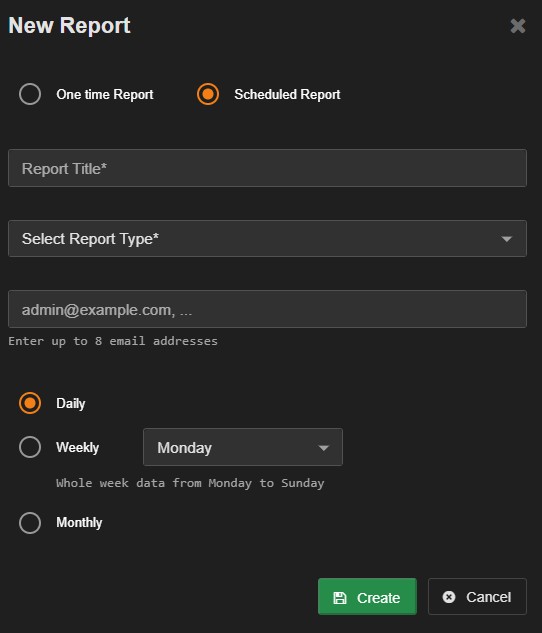Reports
The AppSentinels Platform provides a robust reporting module that enables users to gain actionable visibility into API behavior, vulnerabilities, threat activity, and inventory. Reports can be generated as one-time analyses or scheduled for periodic delivery.
Report Types
| Report Type | Description |
|---|---|
| Application Summary Report | Provides a high-level overview of onboarded applications, including visibility into APIs, sensitive data exposure, detected vulnerabilities, API testing status, and observed attack activities. |
| DAST Vulnerability Coverage Report | Summarizes the results from Dynamic Application Security Testing (DAST), detailing which APIs were tested, test results, and vulnerabilities found. |
| Schema Conformance Summary Report | Identifies inconsistencies between live API traffic and the uploaded API specification (e.g., OpenAPI). Highlights undocumented APIs and parameter mismatches. |
| Security Events Summary Report | Details attack activity observed on APIs, including attack categories (e.g., BOLA, Injection), frequency, and impacted endpoints. |
| Threat Actor Summary Report | Profiles threat actors based on observed attack behavior, including IP, country, attack vectors used, and historical actions. |
| Visibility Report | Shows complete API inventory and classification, highlighting shadow APIs, sensitive endpoints, and unauthenticated paths. |
| Vulnerability CSV Report | Provides a raw export of detected vulnerabilities in CSV format for external analysis or integration. |
| Vulnerability Summary Report | Consolidates vulnerabilities across Passive, Runtime, DAST, and Governance engines and groups them by severity and type. |
One-Time Report
Used for ad-hoc analysis and immediate reporting needs.
- Navigate to Reports
- Click on New Report
- Select One-time Report
- Enter details: title, type, recipients, and duration range
- Click Create to generate
The report is emailed to the specified recipients after processing.

Scheduled Report
Used for recurring reporting, ideal for continuous monitoring and compliance requirements.
Supported Frequencies:
- Daily: Sent every 24 hours
- Weekly: Sent weekly on chosen day
- Monthly: Sent monthly covering previous calendar month
How to Schedule:
- Navigate to Insights → Reports
- Click on New Report
- Select Scheduled Report
- Enter title, type, recipients, and frequency
- Click Create
Scheduled reports are automatically sent as per the selected schedule.

Report Management
The Reports section provides a list of all created and scheduled reports with details like:
- Report Title
- Report Type
- Requested By
- Requested Date
- Frequency
- Duration Range
- Actions (Edit or Delete)
Users can view all reports, sort by date, and manage existing schedules.
Best Practices
- Use Weekly/Monthly reports for audits and sync-ups
- Configure Daily reports for threat monitoring
- Share reports with stakeholders like AppSec, Product Owners, and Compliance
-
Apply naming conventions (e.g.,
Weekly API Events - Team A) for clarity